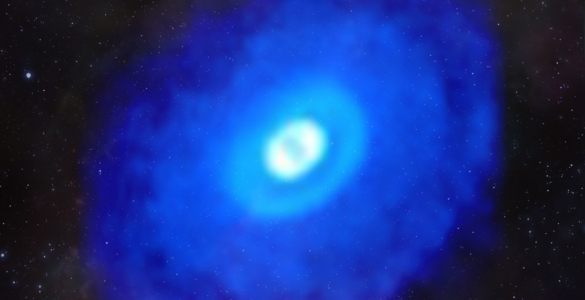Latest NRAO News
News is managed by NRAO News & Public Information. Questions about News? Have a story to share? Want to interview a scientist or create new media about our telescopes?

An international collaboration of scientists using the Atacama Large Millimeter/submillimeter Array (ALMA) has completed the most extensive chemical composition mapping of the protoplanetary disks around five nearby young stars at high resolution, producing images that capture the molecular composition associated with planetary births, and a roadmap for future studies of the makeup of planet- and comet-forming regions. The new study unlocks clues about the role of molecules in planetary system formation, and whether these young planetary systems in the making have what it takes to host life.

The National Science Foundation has awarded NRAO $23 Million for design and development work on the Next Generation Very Large Array, a project proposed as one of the world’s next generation of cutting-edge astronomical research facilities. The award includes funding for producing a prototype antenna for this new radio telescope system.

A new study from scientists using the Atacama Large Millimeter/submillimeter Array (ALMA) suggests that previously displaced gases can re-accrete onto galaxies, potentially slowing down the process of galaxy death caused by ram pressure stripping, and creating unique structures more resistant to its effects.

Using data for more than 500 young stars observed with the Atacama Large Millimeter/Submillimeter Array (ALMA), scientists have uncovered a direct link between protoplanetary disk structures—the planet-forming disks that surround stars—and planet demographics. The survey proves that higher mass stars are more likely to be surrounded by disks with “gaps” in them and that these gaps directly correlate to the high occurrence of observed giant exoplanets around such stars. These results provide scientists with a window back through time, allowing them to predict what exoplanetary systems looked like through each stage of their formation.

A team of scientists using the Atacama Large Millimeter/submillimeter Array (ALMA) to study the young star Elias 2-27 have confirmed that gravitational instabilities play a key role in planet formation, and have for the first time directly measured the mass of protoplanetary disks using gas velocity data, potentially unlocking one of the mysteries of planet formation.

A team of astronomers using the Atacama Large Millimeter/submillimeter Array (ALMA) has completed the first census of molecular clouds in the nearby Universe. The study produced the first images of nearby galaxies with the same sharpness and quality as optical imaging and revealed that stellar nurseries do not all look and act the same. In fact, they’re as diverse as the people, homes, neighborhoods, and regions that make up our own world.

Astronomers used ALMA to study three young, high-mass stars and found, not the orderly, stable process of accreting new material seen in low-mass stars, but instead a “chaotic mess.” They conclude that their observations support a proposed “disordered infall” model for massive young stars that was supported by earlier computer simulations.

Scientists using the Atacama Large Millimeter/submillimeter Array (ALMA) observed a record-breaking stellar flare from Proxima Centauri. The study also marks the first time that a powerful stellar flare, other than those from the Sun, has been observed with such complete wavelength coverage.

New multi-wavelength observations mounted by the Event Horizon Telescope (EHT) collaboration across the entire electromagnetic spectrum have provided new insight into the impact of the black hole at the core of galaxy M87 on its immediate, and not so immediate, surroundings.

The Event Horizon Telescope (EHT) — the worldwide collaboration that produced the first image of a black hole in 2019 — has produced a new image showing details of the magnetic fields in the region closest to the supermassive black hole at the core of the galaxy M87. The new work is providing astronomers with important clues about how powerful jets of material can be produced in that region.





